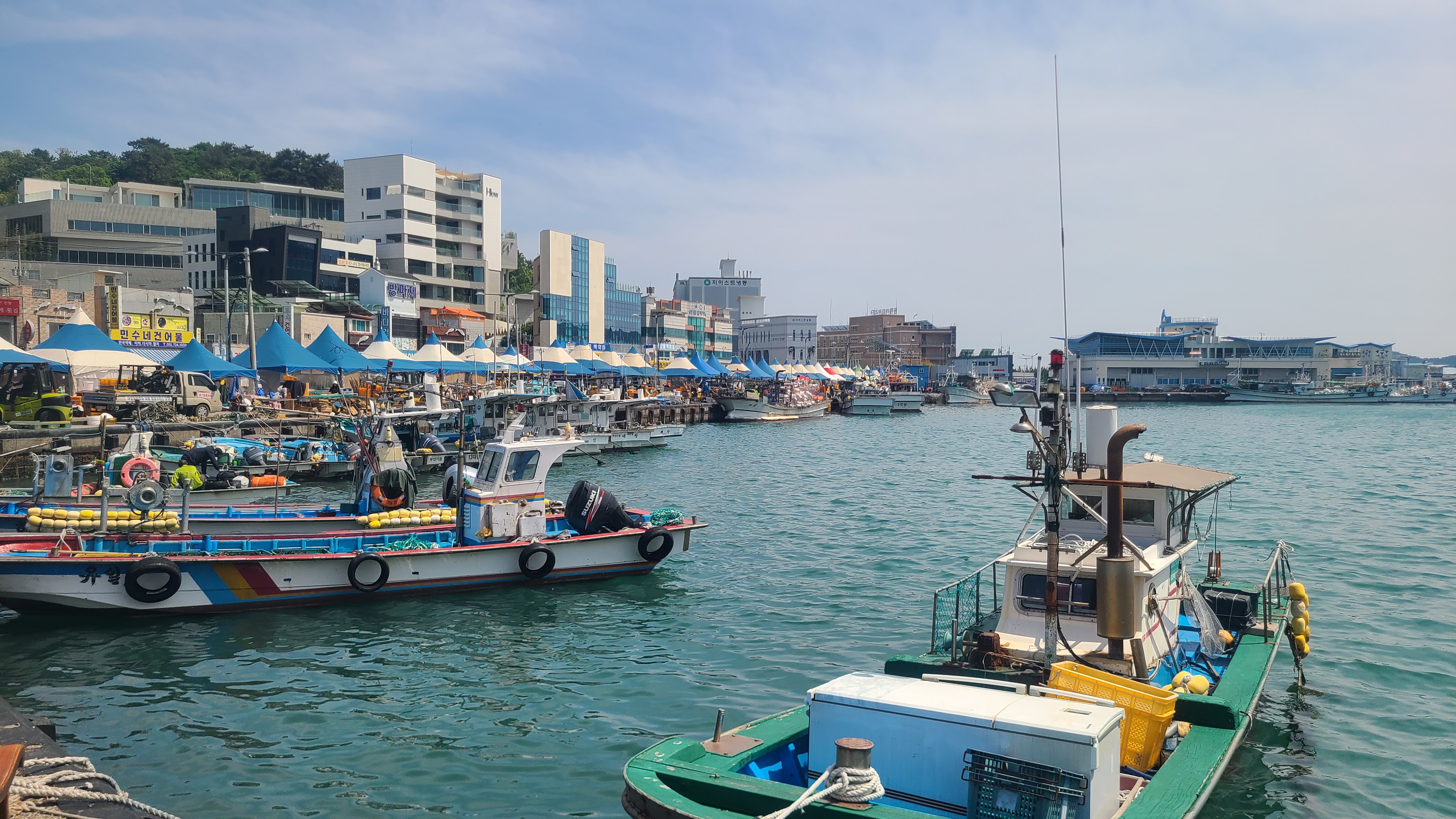“Discover Korea’s Secret Ingredient – Anchovy Sauce from Daebyeon Port”

Daebyeon Port: Where the Anchovy Sauce Tradition Was Born
Tucked away along the southeastern coast of Korea, Daebyeon Port (대변항) might look like a quiet fishing village at first glance. But for generations, this harbor has played a vital role in one of Korea’s most flavorful culinary secrets: 멸치젓갈 (myeolchi jeotgal) – fermented anchovy sauce.

A Glimpse into Daebyeon’s Salty Legacy
Dating back centuries, Daebyeon Port has been a central hub for anchovy fishing and fermentation. Its natural bay, clean sea currents, and coastal winds made it the perfect place for drying and fermenting anchovies. Fishermen would bring in boatloads of fresh anchovies every spring and summer, setting the stage for Korea’s beloved jeotgal traditions.
Jeotgal (젓갈) refers to a variety of fermented seafood sauces in Korea. Among them, anchovy jeotgal is one of the most iconic—and Daebyeon is its heartland.






How Koreans Use Anchovy Sauce (멸치젓갈) in Daily Life
You might be surprised at how versatile this pungent, umami-rich sauce is in Korean cuisine. It’s not just a dipping sauce—it’s a core ingredient in Korea’s most beloved dishes. Here’s how it’s used:
Kimchi Making: Myeolchi jeotgal is often added to napa cabbage kimchi for a deeper, complex flavor.
Soups & Stews: It enhances the base of doenjang-jjigae (soybean paste stew) and kimchi-jjigae.
Seasoning Vegetables: A few drops are enough to flavor boiled greens or stir-fried side dishes.
Marinating Meat or Fish: A small amount brings out bold, rich flavors in marinades.
In short, it's Korea’s fish sauce alternative—but thicker, saltier, and packed with fermented flavor.





Why Koreans Love Jeotgal
In many Western cultures, fermented foods are an acquired taste. But in Korea, they’re a daily necessity. Jeotgal connects people to tradition, preservation, and bold flavors. Many families even make their own jeotgal or buy it from trusted local producers.
Some popular types beyond anchovy jeotgal include:
Ojingeo jeot (fermented squid)
Saeu jeot (fermented tiny shrimp)
Gul jeot (fermented oysters)
Each has its own use—especially when it comes to kimchi!
Daebyeon Port Today: A Living Culinary Heritage
Even today, walking through the streets near Daebyeon Port, you’ll spot rows of traditional clay jars (onggi) fermenting under the sun. Local businesses and families continue to produce homemade myeolchi jeotgal, maintaining a legacy that has nourished Korean tables for centuries.
Visitors can even:
Taste freshly made jeotgal on-site.
Learn about the fermentation process.
Visit seafood markets where anchovies are still a local specialty.
It’s not just a food item—it’s a living piece of Korean identity.
Thinking Beyond the Bottle
Next time you enjoy Korean BBQ or a bowl of steaming kimchi stew, remember that deep umami likely comes from a humble fish caught off the coast of Daebyeon.
The saltiness of jeotgal isn’t just about flavor—it’s about heritage, survival, and soul.
If you’re traveling to Korea and want to go beyond the usual tourist spots, Daebyeon Port is a perfect place to taste, learn, and connect with Korea’s fermented heart.
#DaebyeonPort #KoreanFermentedFoods #AnchovySauce #MyeolchiJeotgal #KoreanJeotgal
#TraditionalKoreanFood #DaebyeonAnchovy #KoreanSeafood #HiddenKorea #KoreanSauces
'korea > Life in Korea' 카테고리의 다른 글
| Why Do Koreans Slurp Their Noodles? The Cultural Secret Behind the Sound (0) | 2025.05.18 |
|---|---|
| "Why Every First-Time Visitor to Busan Should Visit Jagalchi Market" (3) | 2025.05.16 |
| What Is “Sugure Gukbap”? Discover Korea’s Hidden Soul Food (1) | 2025.05.12 |
| 釜山旅行完全ガイド:BTSの足跡と美しい海の町を体感しよう (2) | 2025.05.07 |
| "Explore Busan: Coastal Charms and BTS Pilgrimage Spots in Their Hometown" (0) | 2025.05.07 |